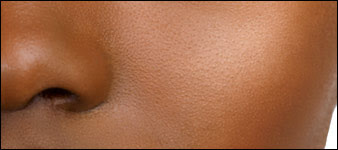
“Body no be firewood o.”” This is a saying my husband David heard regularly during his growing up years from his father. In turn, my husband reminds me. From the time David met me he was amazed at the Type-A, non-stop perfectionist tendencies I exhibited. I would go from early morning to late at night without a break. In the twelve years he has known me, I have made major changes. However, I admit I still occasionally return to my old ways. When I do, my husband offers me this Pidgin English reminder and a smile.
Our bodies are not firewood made to be burned up. Our bodies are not cheap machines to be run relentlessly and then replaced. Your body is priceless. It is the only one you have. It is the vessel that houses your eternal spirit as you walk life’s path. It is the vehicle through which you interface with the world. Through the body, you speak, touch others, experience the environment and act in the world.
A healthy body is a treasure. When we listen to the signals our body gives us and honor it by taking good care of it, we feel alert and happy. A body that is well-cared for is efficient; it enables us to function at our best. Have you ever noticed that when you are rested you feel better, you think better and you can often accomplish more in a shorter period of time? A healthy body supports our intellect, imagination and intuition.
On the other hand, when your body is sick, life feels confusing and burdensome. You are on-edge with people around you. You do not think clearly. You have trouble being productive at work and at home. Life is a struggle not a joy.
Recently a friend of mine told me, “I do not know what is wrong with me. I am angry. I do not have any nice words left for people.”
This friend had been complaining for some time that he needed a break. I asked, “Are you overtired?”
“Yes,” he replied. “In fact, I feel sick, as if I have the flu.” His body was demanding that he take a break.
He planned a day off. It turned into two and continued through the weekend. The next time we talked, I asked how he was doing.
He reported, “I feel much lighter. My brain is fresh again. I can think clearly.”
I smiled and said, “Why do you think it took a physical breakdown to get you to stop?”
He laughed, “Something is always coming and I always want to do extra. It is seems as if ‘this’ effort matters, just this little extra effort. You know? So I decide, ‘I can’t rest now, no not now.’ I might underperform. People won’t get things done if I am not there managing them. There is also an atom of fear involved. I believe I will lose out if I rest. Deep down, I worry that I will miss the deal.”
“Do you think that you will continue to repeat this cycle?” I questioned.
His response was all too familiar, “No way”. I have learned a lot from this. I must say, ‘No.’ I am not going to play with my rest anymore. Nothing will spoil if I am not there. The world won’t stop for me, so I must step out to rest and care for myself. I must learn to say ‘No.’ I need to choose more carefully what appointments I take, make sure they are truly necessary.”
Have you ever come through a situation like this? Have you ever promised yourself that you would now make self-care a priority only to slip again into a pattern of overwork and exhaustion?
I see myself in my friend. I realize that making these changes is rarely as easy as making a one-time commitment. However, there are some simple techniques I have been practicing that help me to do better at taking care of myself. Perhaps they will help you too.
1. Make a conscious decision to value your body.It is not necessary to wait until you become sick and tired of being sick and tired to change your lifestyle. Too many of us begin to value our health only AFTER we have lost it. Why not try an affirmative approach? Begin to appreciate your body. Notice the amazing, ever-ready, brilliantly functioning mechanisms the body places at your disposal. Flex your hand. Wiggle your ankle. Scan the room with your marvelous eyes. Develop an awareness of your miraculous body. When we take time to appreciate our body we are more likely to treat it with respect and love.
 2. Honor your body’s messages.
2. Honor your body’s messages.Pay attention when your body speaks. Stomachs growl when we need food. Yawns come when we are sleepy. Aches or pains tell us a limb or organ needs help. Respect these signals. Heed your body: Stop. Refuel. Repair. Rest. Move into well-being.
 3. Make purposeful choices with your time.
3. Make purposeful choices with your time. Is your schedule jam packed from dawn to dusk or even midnight? When we overload ourselves, we invite problems. We begin to lose things. We forget details. We make errors. We miss vital points in conversations. Look closely at the way you are managing your time. Are your commitments supporting your goals? Take stock. Remember, calm, focused, purposeful action brings meaningful results.
 4. Learn to say, “No.”
4. Learn to say, “No.”Are you committing yourself to activities, friends, meetings and organizations out of obligation? Don’t allow yourself to go through life “sacrificing” and feeling overtaxed. Choose to say a kind but firm, “Thank you for the invitation. I cannot attend at this time.”

5. Schedule periods of rest. Sometimes the most important action you can take is to pause and close your eyes for a moment. Throughout each day, incorporate health-supporting breaks. Take thirty seconds to breathe deeply. Do a five minute stretch: get away from your desk, have a drink of water, enjoy a good laugh, look out the window, get some fresh air. When you sense your body is becoming depleted, take a day off for some quiet time on your own. Go on holiday and when you do, make sure to incorporate down time and relaxation into your itinerary.
 6. Take technology breaks.
6. Take technology breaks. Has your Blackberry, IPod, Computer or Facebook page become an addiction? People can wait for your response; it does not have to be immediate. You are not required to be “turned on” 24 hours a day 7 days a week. Do not become a slave. Use technology to help you maintain connections with others on YOUR terms. Give this a try. Put all technology away for a few hours. Yes, turn it all off. Create times during your week when you can be completely where you are, fully interacting with others in your presence or enjoying time alone.

Your assignment this week is to find away to take care of yourself. Aim for health. According to the World Health Organization, health is not merely the absence of disease or infirmity but a state of complete physical, mental and social well-being.Do not settle for anything less.

















































